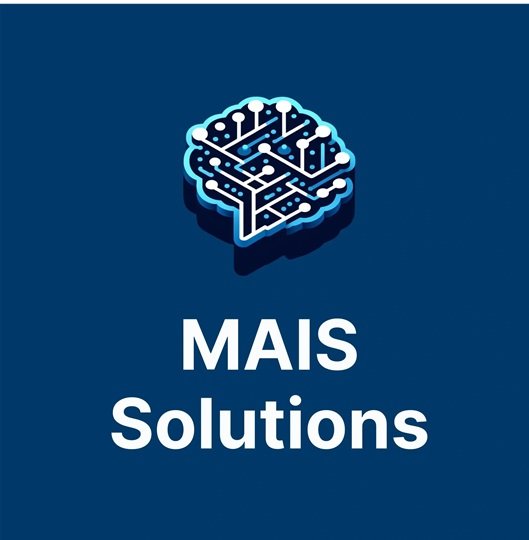Your cart is currently empty!
AI and Biomedicine
Back to: MAIS AI Essentials
Overview of BioMedicine
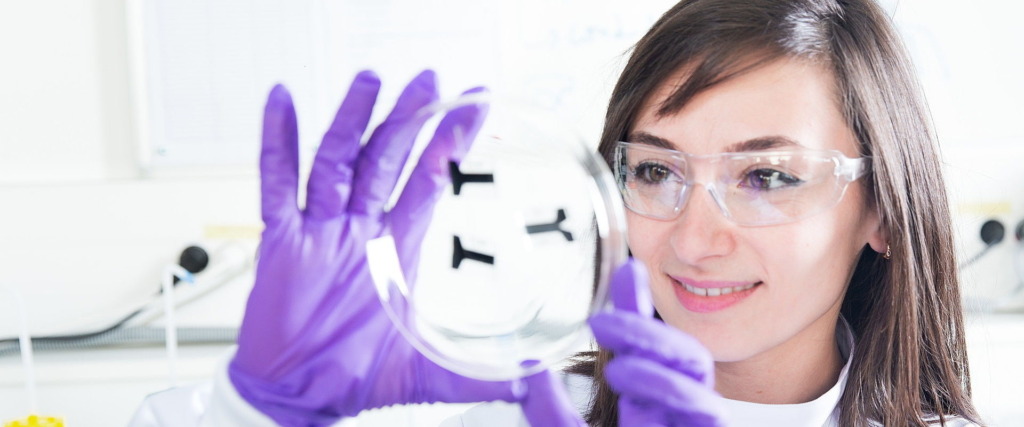
Biomedicine is a branch of medical science that applies biological and physiological principles to clinical practice. It focuses on understanding the mechanisms of diseases and conditions at the molecular, cellular, and system levels. By integrating knowledge from biology, chemistry, genetics, and other scientific disciplines, biomedicine aims to develop new diagnostic tools, treatments, and therapies to improve patient care and health outcomes. Biomedicine often involves research and innovations in areas such as pharmacology, medical imaging, biotechnology, and regenerative medicine.
Biomedical research explores biological processes to develop technologies, treatments, and interventions for human health. It spans basic science, translational studies, and clinical trials, integrating biology, chemistry, physics, and engineering.
The goal of biomedical research is to translate scientific discoveries into clinical solutions for diagnosing, treating, and preventing diseases. This involves understanding molecular and cellular processes, applying findings in clinical settings, and conducting trials to validate new treatments.
Why is AI Suited for Biomedicine?
Biomedical research is a broad and dynamic field that encompasses the study of biological processes and the development of technologies, treatments, and interventions to improve human health. This research spans basic science, translational studies, and clinical trials, and it integrates multiple disciplines including biology, chemistry, physics, and engineering.
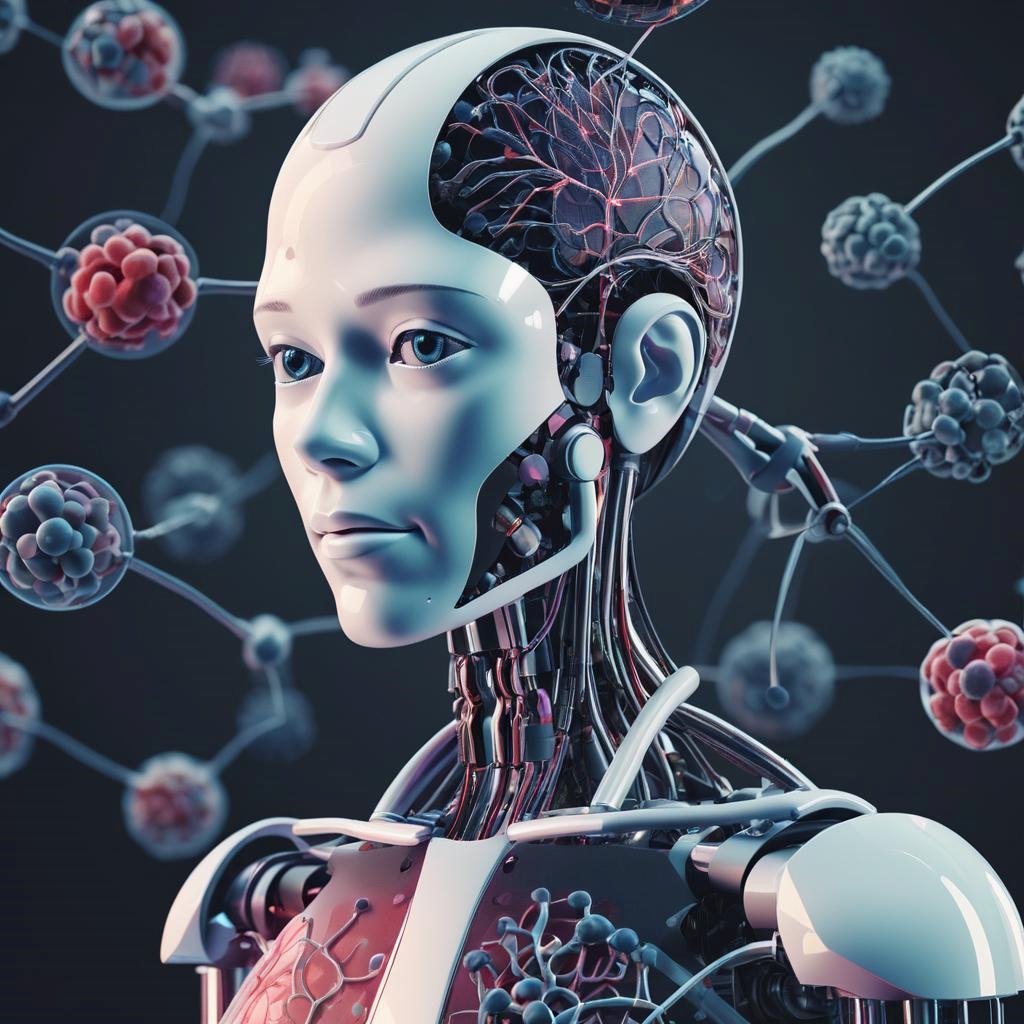
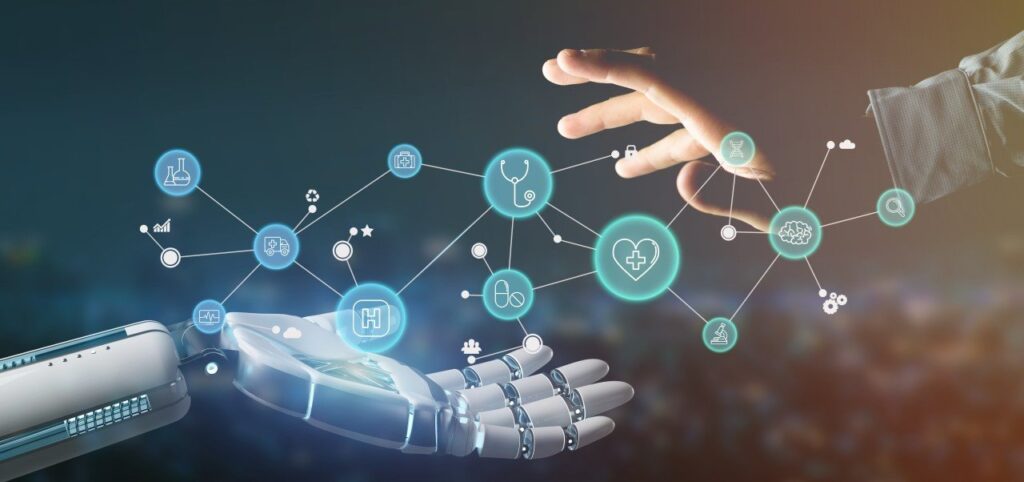
In biomedicine and biomedical research, AI acts as an important collaborator by efficiently analyzing complex datasets to uncover patterns and further identify novel therapeutic targets. AI accelerates drug discovery by predicting interactions, optimizing candidates, and suggesting improvements, thus reducing time and costs.
AI and Protein Folding
- The application of artificial intelligence (AI) in protein folding represents a landmark advancement in biomedicine, transforming our approach to understanding and treating various diseases. AI’s ability to predict protein structures with remarkable accuracy has opened new avenues for biomedical research, drug development, and personalized medicine.
- AI has significantly accelerated biomedical research by providing tools to predict protein structures that are crucial for understanding biological processes. Traditional methods like X-ray crystallography and NMR spectroscopy, although accurate, are time-consuming and costly. AI-driven models, such as AlphaFold, offer a faster, more cost-effective alternative, making it possible to predict the structures of a vast number of proteins in a fraction of the time. This rapid advancement facilitates the study of complex biological systems and the development of new hypotheses in molecular biology.
Check out this Simulation Model of Protein Folding
https://www.steampilots.com/protein-folding-model
Applications of AI and Medicine
- Diagnosis
- Treatment
- Pathology
- Medical Imaging
- Robotic Surgery – Intuitive Surgical
- Telemedicine
- Drug Discovery and Development
- Education for Health Care Professionals
AI and Medical Diagnosis
- Medical Imaging Diagnosis
- Radiology: AI algorithms can analyze X-rays, CT scans, MRIs, and other imaging modalities to detect abnormalities such as tumors, fractures, and infections. AI systems can sometimes identify subtle changes that might be missed by human eyes.
- Pathology: AI can assist pathologists by analyzing tissue samples and identifying patterns indicative of diseases like cancer.
- Predictive Analytics
- Risk Assessment: AI can analyze large datasets to identify patients at risk of developing certain conditions, such as heart disease or diabetes, based on their medical history, lifestyle, and genetic factors.
- Prognosis: AI models can predict the likely course of a disease, helping doctors to plan treatment strategies and manage patient expectations.
- Electronic Health Records (EHRs)
- Data Mining: AI can sift through vast amounts of EHR data to identify trends, suggest diagnoses, and recommend treatments.
- Natural Language Processing (NLP): AI can interpret and extract useful information from unstructured text in EHRs, such as doctor’s notes and patient history.
- Clinical Decision Support Systems (CDSS)
- Diagnostic Assistance: AI-powered CDSS can provide doctors with diagnostic suggestions based on patient data and the latest medical research.
- Treatment Recommendations: These systems can suggest treatment options and guidelines based on a patient’s specific case and the latest clinical evidence.
- Genomics and Personalized Medicine
- Genomic Analysis: AI can analyze genetic data to identify mutations and predict an individual’s susceptibility to certain diseases.
- Tailored Treatments: By understanding the genetic makeup of patients, AI can help in designing personalized treatment plans, especially in areas like oncology.
- Remote Monitoring and Telemedicine
- Wearables: AI can analyze data from wearable devices to monitor patients’ vital signs and detect anomalies in real-time.
- Virtual Consultations: AI can assist in telemedicine by analyzing patient symptoms and providing preliminary diagnoses and treatment recommendations.
- Drug Discovery and Development
- Identifying Candidates: AI can analyze biological data to identify potential drug candidates faster than traditional methods.
- Predicting Outcomes: AI models can predict the efficacy and side effects of new drugs, speeding up the development process and reducing costs.
- Automating Routine Tasks
- Administrative Tasks: AI can automate scheduling, billing, and other administrative tasks, allowing healthcare providers to focus more on patient care.
- Data Entry: AI-powered systems can assist with data entry and reduce the burden of documentation on healthcare providers.
Benefits of AI in Medical Diagnosis
- Improved Accuracy: AI can reduce diagnostic errors by providing a second opinion and identifying patterns that might be missed by humans.
- Efficiency: AI can process and analyze data much faster than humans, leading to quicker diagnoses and treatment decisions.
- Accessibility: AI tools can help provide diagnostic capabilities in underserved or remote areas where access to specialists is limited.
- Cost Reduction: By automating routine tasks and improving diagnostic accuracy, AI can help reduce healthcare costs.
Challenges & Considerations of AI in Medical Diagnosis
- Data Quality: AI models require high-quality data for training and validation. Inaccurate or biased data can lead to incorrect diagnoses.
- Ethical Concerns: The use of AI in healthcare raises ethical issues, including patient privacy, data security, and the potential for biased decision-making.
- Integration: Integrating AI tools into existing healthcare systems and workflows can be challenging.
- Regulation: Ensuring that AI systems comply with healthcare regulations and standards is crucial for their safe and effective use.
AI and Medical Treatment
- Personalized Medicine
- Genomic Analysis: AI tailors treatments to a patient’s genetic makeup, crucial in oncology for targeting specific cancer cell mutations.
- Predictive Models: AI predicts patient responses to treatments using medical history, lifestyle, and genetic profile, enabling personalized care plans.
- Treatment Recommendation Systems
- Clinical Decision Support Systems (CDSS): AI-powered CDSS offer evidence-based treatment recommendations by analyzing patient data and medical research.
- Drug Interaction Alerts: AI alerts healthcare providers to potential adverse drug interactions, enhancing patient safety and optimizing medication regimens.
- Robotic Surgery
- Precision and Accuracy: AI enhances robotic surgical systems for minimally invasive procedures, ensuring high precision, smaller incisions, and reduced recovery times.
- Assistance in Surgery: AI provides real-time assistance during surgery by identifying critical structures and guiding the surgeon’s movements.
- Treatment Monitoring and Management
- Remote Monitoring: AI analyzes data from wearable devices and sensors to monitor patients’ vital signs in real-time, enabling early detection of complications and timely interventions.
- Chronic Disease Management: AI assists in managing chronic conditions by continuously monitoring patients and adjusting treatment plans based on real-time data.
- Mental Health Treatment
- Chatbots and Virtual Therapists: AI-powered chatbots and virtual therapists offer mental health support through cognitive behavioral therapy (CBT), monitor patient progress, and provide resources for managing mental health conditions.
- Radiation Therapy
- Treatment Planning: AI aids in planning radiation therapy by precisely targeting cancer cells and minimizing damage to surrounding healthy tissues.
- Dose Optimization: AI optimizes radiation doses for the best outcomes with minimal side effects.
- Rehabilitation and Physical Therapy
- AI-Driven Rehabilitation: AI creates personalized rehabilitation programs tailored to patient progress and needs, with robotics and AI devices assisting in proper exercise performance.
- Virtual Reality (VR) Therapy: AI-enhanced VR provides immersive and interactive therapy sessions for physical and cognitive rehabilitation.
- Infection Control
- Predicting Outbreaks: AI analyzes data to predict and monitor infectious disease outbreaks, enabling timely and targeted interventions.
- Antibiotic Stewardship: AI recommends appropriate antibiotic treatments and helps prevent misuse, reducing the risk of antibiotic resistance.
AI and Medical Pathology
AI in medical pathology is transforming the way diseases are diagnosed, analyzed, and treated. The following are some key areas where AI is making a significant impact.
- Disease and Diagnosis
- Image Analysis: AI algorithms, particularly those using deep learning, can analyze medical images (like histopathological slides, MRIs, and CT scans) with high accuracy. These systems can identify abnormalities such as tumors, infections, and other pathological changes faster and sometimes more accurately than human pathologists.
- Pattern Recognition: AI can detect patterns in medical data that might be missed by human eyes. This is useful in diagnosing diseases where subtle changes in tissues or cells are critical for accurate diagnosis.
- Workflow Optimization
- Automated Tasks: AI can automate routine tasks such as counting cells, measuring tissue structures, and annotating images, freeing up pathologists to focus on more complex diagnostic tasks.
- Data Management: AI can help in managing and organizing vast amounts of medical data, making it easier to retrieve and analyze patient information when needed.
- Enhanced Research
- Drug Development: AI accelerates drug discovery by analyzing how different compounds interact with biological targets, predicting their efficacy and safety.
- Genomics: AI aids in the interpretation of genomic data, identifying mutations and genetic markers associated with diseases, which can lead to the development of targeted therapies.
- Educational Tools
- Training Stimulations: AI-driven simulations and virtual models can help train pathologists by providing realistic scenarios for diagnosis and decision-making. These tools can simulate a wide range of pathological conditions and scenarios.
- Continuous Learning: AI can keep pathologists updated on the latest advancements and research by analyzing and summarizing new scientific literature and clinical findings.
Robotic Surgery
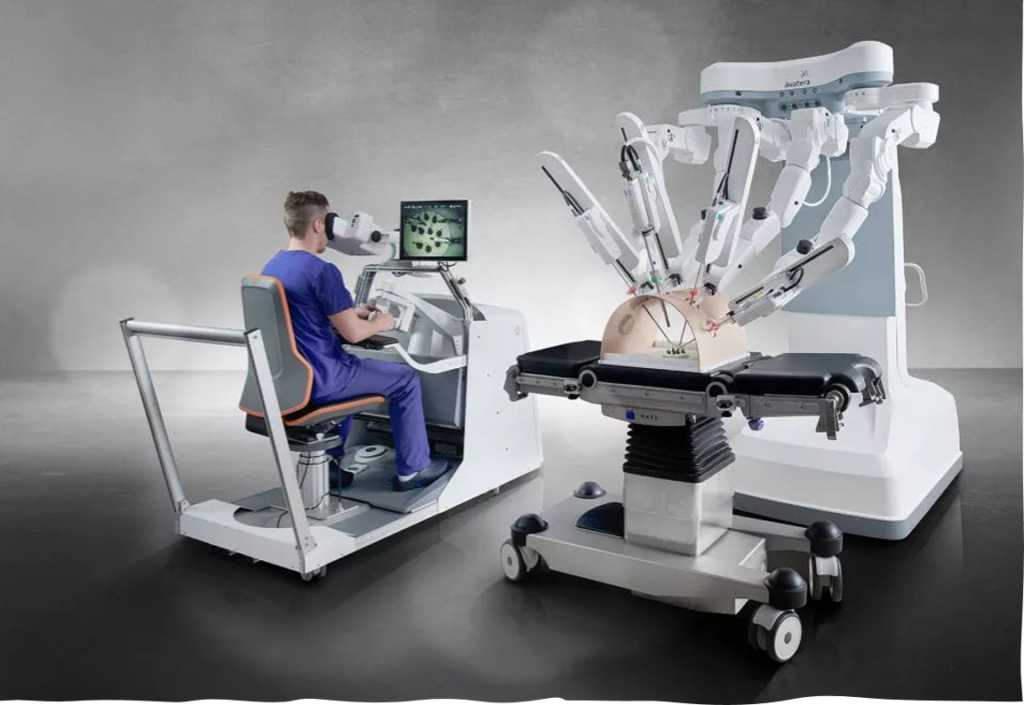

Robotic surgery is a type of minimally invasive surgery that uses advanced robotic systems to assist surgeons in performing complex procedures with more precision, flexibility, and control than traditional techniques.
Intuitive Surgical
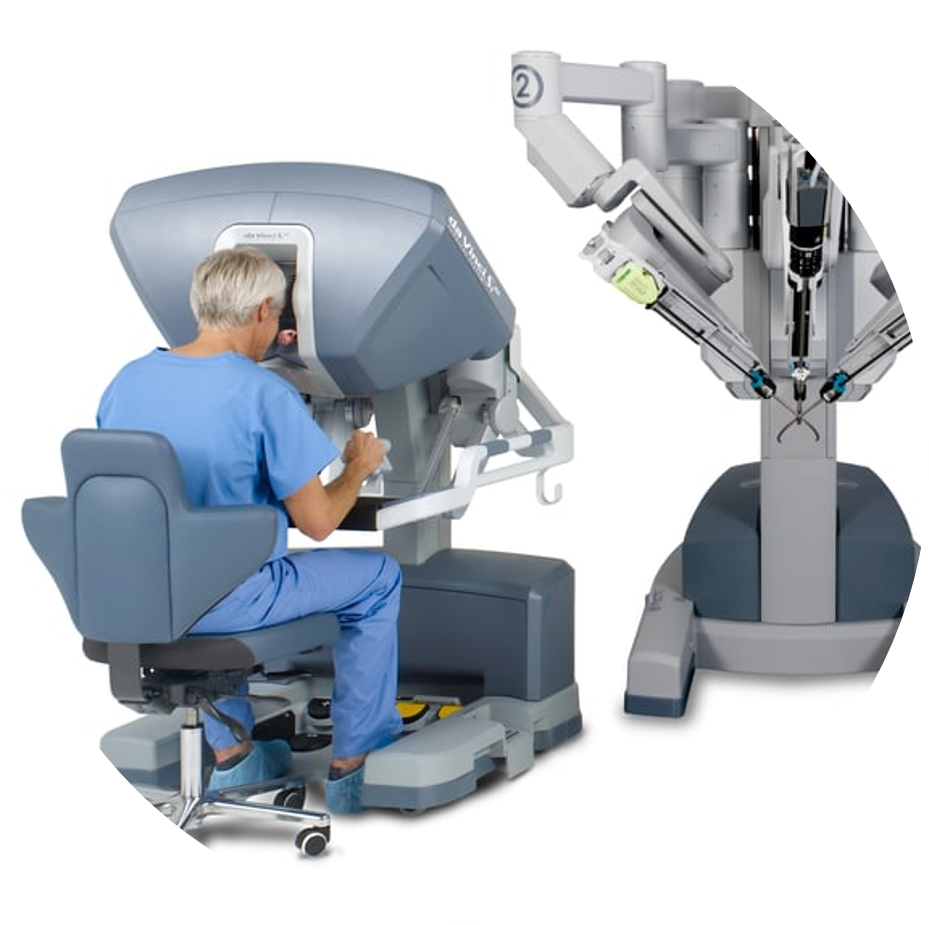
Intuitive Surgical is a leading company in the field of robotic-assisted surgery, best known for developing and commercializing the da Vinci Surgical System. Some key features and products include:
- Da Vinci Surgical System
- Surgeon Console: Where the surgeon operates the robotic instruments using hand controls and foot pedals.
- Patient-Side Cart: Contains the robotic arms that hold the surgical instruments and camera.
- Vision System: Provides a high-definition, 3D view of the surgical field, giving the surgeon enhanced visualization.
- Ion Endoluminal System
- A robotic-assisted platform designed for minimally invasive lung biopsies, providing improved precision and access within the lung.
AI and Medical Imaging
- AI is transforming medical imaging by significantly enhancing diagnostic accuracy and efficiency. Advanced algorithms from AI analyze images from x-rays, MRIs, and CT scans to detect abnormalities such as tumors or fractures with high precision.
- Additionally, AI optimizes workflows by automating report generation and prioritizing urgent cases, which allows radiologists to focus more on complex cases.
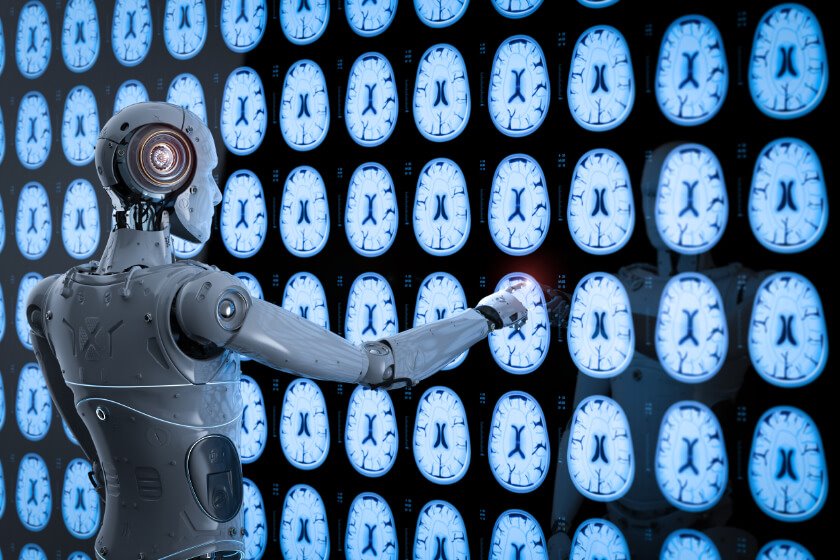
AI and Telemedicine
- Diagnosis and Screening
- Automated Diagnosis: AI algorithms can analyze medical data, such as images, lab results, and patient histories, to assist in diagnosing conditions. For example, AI can detect abnormalities in radiology images (X-rays, MRIs) and flag them for further review by a healthcare provider.
- Symptom Checkers: AI-powered symptom checkers can evaluate patient-reported symptoms and suggest possible diagnoses, guiding patients on whether they need to seek medical attention.
- Virtual Assistants and Chatbots
- Patient Interaction: AI-driven chatbots can answer common patient questions, schedule appointments, and provide information about medications and treatment plans, reducing the burden on healthcare providers and improving patient engagement.
- Follow-up Care: AI virtual assistants can follow up with patients after their appointments to check on their progress, remind them to take medications, and report any issues to healthcare providers.
AI and Drug Discovery and Development
Artificial intelligence (AI) is revolutionizing pharmacology, offering new tools and methodologies to enhance drug discovery, development, and personalized medicine. Some key areas where AI is making a significant impact:

- Drug Discovery
- Target Identification: AI algorithms analyze vast datasets to identify new drug targets. Machine learning models can predict the biological relevance of potential targets, accelerating the initial stages of drug discovery.
- Compound Screening: Virtual screening powered by AI helps in identifying promising compounds from large chemical libraries. AI can predict the binding affinity of compounds to target proteins, reducing the need for extensive laboratory testing.
- Drug Design
- Molecular Modeling: AI aids in the design of new molecules with desired properties. Generative models, such as deep learning algorithms, can create novel chemical structures that are optimized for efficacy and safety.
- Predictive Analytics: AI models predict the pharmacokinetics and pharmacodynamics of drug candidates, assessing how they are absorbed, distributed, metabolized, and excreted in the body. This helps in designing drugs with optimal therapeutic profiles.
- Clinical Trials
- Patient Recruitment: AI streamlines patient recruitment by analyzing electronic health records and identifying eligible candidates based on specific criteria. This improves the efficiency and speed of clinical trials.
- Trial Design: AI optimizes clinical trial design by simulating various scenarios and predicting outcomes. This helps in selecting appropriate endpoints, sample sizes, and study protocols.
- Data Analysis: AI analyzes clinical trial data in real-time, identifying patterns and insights that might be missed by traditional statistical methods. This enhances the accuracy of trial results and accelerates decision-making.
- Personalized Medicine
- Biomarker Discovery: AI identifies biomarkers that predict individual responses to drugs. This allows for the development of personalized treatment plans based on a patient’s genetic makeup and other factors.
- Precision Dosing: AI algorithms determine optimal dosing regimens tailored to individual patients, minimizing adverse effects and maximizing therapeutic benefits.
- Drug Repurposing
- Identification of New Uses: AI analyzes existing drugs to identify new therapeutic uses. By examining large datasets of clinical outcomes and molecular interactions, AI can uncover potential off-label applications for approved drugs.
- Epidemiological Analysis: AI assists in understanding disease patterns and the impact of drugs on different populations. This can lead to the discovery of new indications for existing drugs.
- Safety and Pharmacovigilance
- Adverse Event Detection: AI monitors and analyzes data from various sources, including social media, medical records, and clinical reports, to detect adverse drug reactions early. This enhances drug safety and regulatory compliance.
- Risk Prediction: AI models predict the likelihood of adverse events based on patient characteristics and drug properties. This helps in proactive risk management and mitigation.
AI and Genetics
- Genomic Data Analysis
- Pattern Recognition: AI, particularly machine learning algorithms, can analyze vast amounts of genomic data to identify patterns that traditional methods might miss. This includes identifying gene variants associated with diseases.
- Variant Interpretation: AI models can predict the functional impact of genetic variants, helping to distinguish between benign and potentially harmful mutations.
- Personalized Medicine
- Drug Response Prediction: AI is used to analyze an individual’s genetic makeup to predict how they will respond to certain medications, paving the way for personalized medicine.
- Tailored Treatment Plans: By intergating genetic data with other clinical information, AI can help create personalized treatment plans for patients, improving outcomes.
- Gene Editing
- CRISPR Optimization: AI can optimize the design of CRISPR-Cas9 systems for gene editing by predicting off-target effects, making gene editing more precise.
- Predicting Outcomes: AI models can predict the outcomes of gene editing experiments, speeding up the research process.
- Understanding Genetic Diseases
- Disease Gene Identification: AI can sift through genetic data to identify genes that may be responsible for inherited diseases.
- Pathway Analysis: AI can help map out the biological pathways that are disrupted in genetic diseases, providing insights into potential therapeutic targets.
- Evolutionary Biology
- Phylogenetics: AI algorithms are used to reconstruct evolutionary trees (phylogenies) by analyzing genetic sequences, helping scientists understand the evolutionary relationships between species.
- Population Genetics: AI helps in modeling and stimulating population dynamics over time, providing insights into how genetic variation spreads through populations.
- Synthetic Biology
- Gene Synthesis and Design: AI assists in designing synthetic genes or genetic circuits that can perform specific functions, such as producing a particular protein or metabolite.
- Optimizing Biological Systems: AI can be used to optimize the performance of genetically engineered organisms for applications like biofuel production or bioremdiation.
AI and Health Care Education

AI is transforming healthcare education by offering personalized learning, immersive simulations, and interactive tools. It tailors content to individual needs, provides realistic practice environments through virtual reality, and uses predictive analytics to identify learning gaps. Natural language processing (NLP) enhances interaction with AI-driven chatbots, while automated assessments streamline grading and feedback. Overall, AI makes learning more adaptive and efficient, helping professionals stay current in a rapidly evolving field.
Case Study – AI and Cancer Research
- AI is revolutionizing cancer research by enhancing early detection and diagnosis. Machine learning algorithms analyze medical images, such as MRI and CT scans, to identify patterns indicating cancer, often with greater accuracy than traditional methods. This enables earlier interventions and improved patient outcomes. Additionally, AI models integrate various data sources to develop precise and personalized treatment plans, optimizing therapy effectiveness and minimizing side effects.
- AI also accelerates the discovery of new cancer treatments by analyzing data from clinical trials and scientific literature to identify potential drug candidates and predict their efficacy. This streamlines the drug discovery process, reducing time and costs. Furthermore, AI helps identify biomarkers essential for understanding cancer mechanisms and developing targeted therapies. Through these advancements, AI is transforming cancer research and offering hope for more effective treatments.
Case Study – AI and Moderna
- Moderna, a leading biotechnology company, has leveraged AI to revolutionize its drug development and mRNA technology. By integrating AI into its research and development processes, Moderna has significantly accelerated the discovery and optimization of mRNA sequences, which are crucial for developing vaccines and therapies. AI algorithms analyze vast amounts of biological data to predict the most effective mRNA sequences, reducing the time and cost traditionally associated with drug development. This approach was pivotal in the rapid development of Moderna’s COVID-19 vaccine, demonstrating the potential of AI to transform the biopharmaceutical industry.
- In addition to vaccine development, Moderna utilizes AI to enhance manufacturing processes and improve the overall efficiency of its operations. Machine learning models predict potential bottlenecks and optimize production schedules, ensuring a smooth and scalable manufacturing process. AI-driven insights also assist in quality control, identifying and addressing issues before they impact product quality. By integrating AI throughout its operations, Moderna continues to push the boundaries of medical science, delivering innovative solutions to global health challenges with unprecedented speed and precision.
AI and Protein Folding
- AI has advanced the study of protein folding, the process by which proteins achieve their functional structures. Traditionally, predicting a protein’s 3D shape can be complex and costly; however, AI models such as Deepmind’s AlphaFold, have made significant breakthroughs , providing detailed insights into protein structures that were previously hard to determine.
- AlphaFold 3, the latest from DeepMind, enhances protein structure prediction with greater accuracy and efficiency. Using advanced deep learning and a comprehensive dataset, it handles diverse sequences and complex structures precisely. Notably, it predicts protein complexes’ structures, offering crucial insights into protein interactions and cellular processes, which aids in drug discovery and disease treatment.
AI and Biocomputing
- AI and biocomputing are increasingly interlinked;. AI enhances biocomputing by providing sophisticated algorithms and data analysis tools that can model and interpret complex biological systems. For instance, AI-driven models can predict protein folding patterns or simulate cellular processes, accelerating discoveries in drug development and personalized medicine.
- Conversely, insights from biocomputing, such as biological data processing methods, can inspire new AI algorithms and architectures, potentially leading to more efficient and biologically-inspired computing systems. This synergy between AI and biocomputing not only advances our understanding of biological processes but also pushes the boundaries of AI capabilities.
The Future of AI and Biomedicine
- Integration of Multi-Omics Data
- Combining genomics, proteomics, metabolomics, and other omics data to gain a comprehensive understanding of health and disease.
- Telemedicine and Digital Health
- Expanding the use of telemedicine and digital health tools to improve access to healthcare and enhance patient monitoring.
- Regenerative Medicine
- Advancing the development of therapies that promote tissue regeneration and repair.
- Microbiome Research
- Investigating the role of the microbiome in health and disease to develop targeted therapies
- and probiotics.
- Global Health Initiatives
- Addressing health disparities and emerging infectious diseases through international
- collaboration and research.
Activities
- Write an essay about what “AI and Biomedicine” means to you. If you were going to pursue a career in this area, list out some of the courses you would need to take
- Mapping the Human Genome has been a tremendous accomplishment in the area of Biomedicine. So now is the Alpha3 Protein Folding Project. Write an essay on how these two incredible Scientific advancements will benefit society.
Sources
- https://www.youtube.com/live/2Z0sYie9pyA?si=EaKTS1uxBGtuEz_3 – Biomedicine in the Age of AI
- https://www.youtube.com/watch?v=TwIbCcPuWnM – University College of London AI and Biomedicine Program
- https://new.nsf.gov/funding/opportunities/smart-health-biomedical-research-era-artificial
